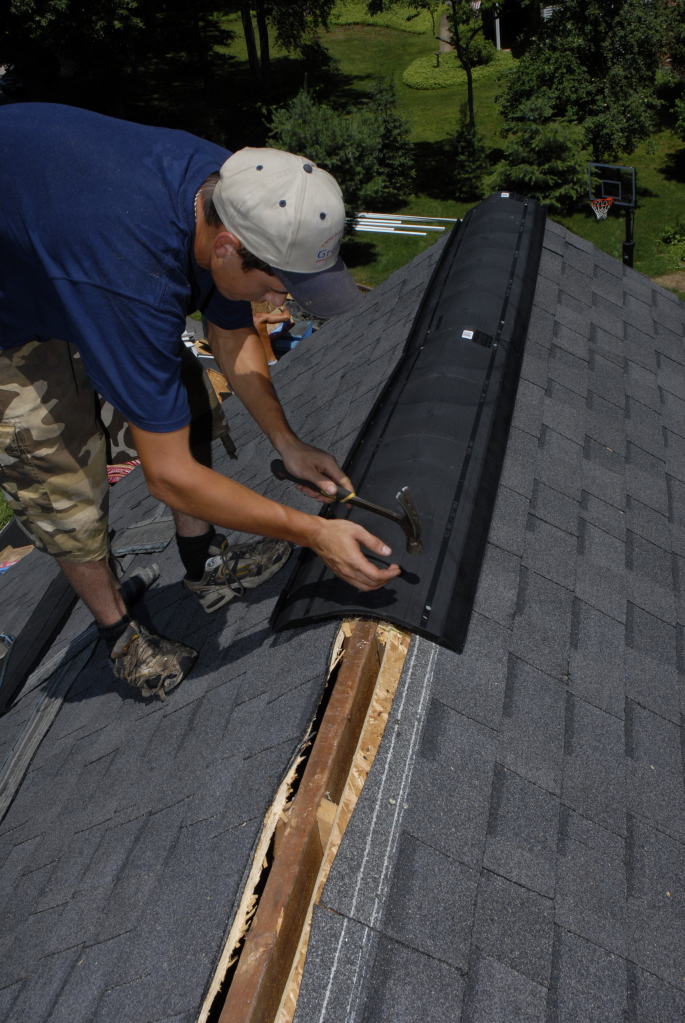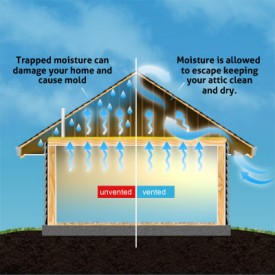The main purpose of attic ventilation is to rid the attic of moisture.If moist air remains in the attic it can degrade the roof structure and contribute to moisture issues. Additionally, attic ventilation can help remove hot air in the summer and maintain cooler roof deck temperatures in the winter; which helps to control ice damming. A well-insulated and well ventilated attic is essential to energy efficiency.It seems counter-intuitive to insulate the attic and then cut holes, allowing air flow from soffits to the peak; however, both practices are essential in reducing potential for attic moisture while separating the conditioned from the un-conditioned portions of a home.Inadequate insulation and incomplete air sealing almost certainly allows moisture in the attic.Improper air sealing andunbalanced ventilation could become problematic and draw conditioned air into the attic to compensate for air needed to exhaust. In a balanced, ventilated attic, the temperature differential drives the moisture (i.e. hot air rises).

Ridge Vent Samples
GET YOUR FREE RIDGE VENTILATION SAMPLES TODAY
Does attic ventilation impact roof temperature? Even on a cloudy day, roof temperatures can rise well above the outside air. Building science research has found many factors have a significant impact on roof temperature. As far as the impact of attic ventilation, it’s the least effective for maintaining a cool shingle temperature. Here is a list of factors that impact roof shingle temperature (listed from most to least significant):
- Direct sunlight/UV exposure (hour of day, cloud cover, roof orientation, project location)
- Outdoor air temperature
- Color of the roof shingles
- Weather event
- Heat loss from conditioned home
- Attic ventilation
Building science and building codes support attic ventilation as a best practice technique. If you’re interested in continuing the conversation about how attic ventilation using ridge ventilation can be implemented in your next roofing project, contact us.
Resources for more info:
http://www.greenbuildingadvisor.com/blogs/dept/musings/all-about-attic-venting
http://www.buildingscience.com/documents/digests/bsd-102-understanding-attic-ventilation
http://www.homeadvisor.com/article.show.5-Myths-about-Attic-Ventilation.16547.html
https://www.energystar.gov/index.cfm?c=diy.diy_attic_ventilation
http://www.fsec.ucf.edu/en/publications/pdf/FSEC-CR-1496-05.pdf
http://energysmartohio.com/plan-your-job/attic-ventilation
Photo Credit: http://www.consumerconstruction.com/roofing-siding-doors-windows-decking-northern-virginia/roofing/attic-ventilation/




